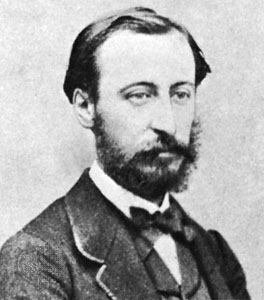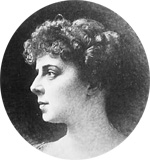|
Piano Concerto No. 2 (Saint-Saëns)
The Piano Concerto No. 2 in G minor, Opus number, Op. 22 by Camille Saint-Saëns was composed in 1868 and is probably Saint-Saëns' most popular piano concerto. It was dedicated to Madame A. de Villers (née de Haber). At the première on 13 May the composer was the soloist and Anton Rubinstein conducted the orchestra. Saint-Saëns wrote the concerto in three weeks and had very little time to prepare for the première; consequently, the piece was not initially successful. The capricious changes in style provoked Zygmunt Stojowski to quip that it "begins with Johann Sebastian Bach, Bach and ends with Jacques Offenbach, Offenbach." Overview The piece follows the traditional form of three movement (music), movements but allows for more freedom in tempo markings. Normally, the first movement is fast-paced, while the second is slower, but the first movement here is slow and the second movement has a scherzo-like quality, resulting in a form resembling a typical four-movement symphon ... [...More Info...] [...Related Items...] OR: [Wikipedia] [Google] [Baidu] |
Sonata Form
The sonata form (also sonata-allegro form or first movement form) is a musical form, musical structure generally consisting of three main sections: an exposition, a development, and a recapitulation. It has been used widely since the middle of the 18th century (the early Classical music era, Classical period). While it is typically used in the first Movement (music), movement of multi-movement pieces, it is sometimes used in subsequent movements as well—particularly the final movement. The teaching of sonata form in music theory rests on a standard definition and a series of hypotheses about the underlying reasons for the durability and variety of the form—a definition that arose in the second quarter of the 19th century. There is little disagreement that on the largest level, the form consists of three main sections: an exposition, a development, and a recapitulation; however, beneath this general structure, sonata form is difficult to pin down to a single model. The standa ... [...More Info...] [...Related Items...] OR: [Wikipedia] [Google] [Baidu] |
Saltarello
The ''saltarello'' is a musical dance originally from Italy. The first mention of it is in Add MS 29987, a late-fourteenth- or early fifteenth-century manuscript of Tuscany, Tuscan origin, now in the British Library. It was usually played in a fast meter (music), triple meter and is named for its peculiar leaping step, after the Italian language, Italian verb ''saltare'' ("to jump"). This characteristic is also the basis of the German name ''Hoppertanz'' or ''Hupfertanz'' ("hopping dance"); other names include the French ''pas de Brabant'' and the Spanish ''alta'' or ''alta danza''. History The saltarello enjoyed great popularity in the courts of Middle Ages, medieval Europe. During the 14th century, the word saltarello became the name of a particular dance step (a double with a hop on the final or initial upbeat), and the name of a meter of music (a fast triple), both of which appear in many choreographed dances. Entire dances consisting of only the saltarello step and meter ... [...More Info...] [...Related Items...] OR: [Wikipedia] [Google] [Baidu] |
Presto (music)
In musical terminology, tempo (Italian for 'time'; plural 'tempos', or from the Italian plural), measured in beats per minute, is the speed or pace of a given composition, and is often also an indication of the composition's character or atmosphere. In classical music, tempo is typically indicated with an instruction at the start of a piece (often using conventional Italian terms) and, if a specific metrical pace is desired, is usually measured in beats per minute (bpm or BPM). In modern classical compositions, a " metronome mark" in beats per minute, indicating only measured speed and not any form of expression, may supplement or replace the normal tempo marking, while in modern genres like electronic dance music, tempo will typically simply be stated in bpm. Tempo (the underlying pulse of the music) is one of the three factors that give a piece of music its texture. The others are meter, which is indicated by a time signature, and articulation, which determines how each ... [...More Info...] [...Related Items...] OR: [Wikipedia] [Google] [Baidu] |
The Carnival Of The Animals
''The Carnival of the Animals'' () is a humorous musical suite of 14 movements, including " The Swan", by the French composer Camille Saint-Saëns. About 25 minutes in duration, it was written for private performance by two pianos and chamber ensemble; Saint-Saëns prohibited public performance of the work during his lifetime, feeling that its frivolity would damage his standing as a serious composer. The suite was published in 1922, the year after his death. A public performance in the same year was greeted with enthusiasm, and it has remained among his most popular. It is less frequently performed with a full orchestral complement of strings. History Following a disastrous concert tour of Germany in 1885–86, Saint-Saëns withdrew to a small Austrian village, where he composed ''The Carnival of the Animals'' in February 1886. From the beginning he regarded the work as a piece of fun. On 9 February 1886 he wrote to his publishers Durand in Paris that he was composing a ... [...More Info...] [...Related Items...] OR: [Wikipedia] [Google] [Baidu] |
E-flat Major
E-flat major is a major scale based on E, consisting of the pitches E, F, G, A, B, C, and D. Its key signature has three flats. Its relative minor is C minor, and its parallel minor is E minor, (or enharmonically D minor). The E-flat major scale is: Changes needed for the melodic and harmonic versions of the scale are written in with accidentals as necessary. The E-flat harmonic major and melodic major scales are: Scale degree chords The scale degree chords of E-flat major are: * Tonic – E-flat major * Supertonic – F minor * Mediant – G minor * Subdominant – A-flat major * Dominant – B-flat major * Submediant – C minor * Leading-tone – D diminished Characteristics The key of E-flat major is often associated with bold, heroic music, in part because of Ludwig van Beethoven's usage. His ''Eroica Symphony'', ''Emperor Concerto'' and ''Grand Sonata'' are all in this key. Beethoven's (hypothetical) 10th Symphony is also in E-flat. B ... [...More Info...] [...Related Items...] OR: [Wikipedia] [Google] [Baidu] |
Coda (music)
In music, a coda (; ; plural ) is a passage (music), passage that brings a piece (or a movement (music), movement) to an end. It may be as simple as a few bar (music), measures, or as complex as an entire section (music), section. In classical music The presence of a coda as a structural element in a movement is especially clear in works written in particular musical forms. Codas were commonly used in both sonata form and Variation (music), variation movements during the Classical era. In a sonata form movement, the recapitulation (music), recapitulation section will, in general, follow the exposition (music), exposition in its thematic content, while adhering to the home key (music), key. The recapitulation often ends with a passage that sounds like a termination, paralleling the music that ended the exposition; thus, any music coming after this termination will be perceived as extra material, i.e., as a coda. In works in variation form, the coda occurs following the last va ... [...More Info...] [...Related Items...] OR: [Wikipedia] [Google] [Baidu] |
Cadenza
In music, a cadenza, (from , meaning cadence; plural, ''cadenze'' ) is, generically, an improvised or written-out ornamental passage played or sung by a soloist(s), usually in a "free" rhythmic style, and often allowing virtuosic display. During this time the accompaniment will rest, or sustain a note or chord. Thus an improvised cadenza is indicated in written notation by a fermata in all parts. A cadenza will usually occur over either the final or penultimate note in a piece, the lead-in (), or the final or penultimate note in an important subsection of a piece. A cadenza can also be found before a final coda or ritornello. Origin Initially, cadenzas were more simple and structured - a performer would add small embellishments such as trills to the end of cadences. These small embellishments of the early cadenza did not affect meter. However, as the improvised embellishments continued, they became longer and more thought out. This made way for the 'composed' cade ... [...More Info...] [...Related Items...] OR: [Wikipedia] [Google] [Baidu] |
Gabriel Fauré
Gabriel Urbain Fauré (12 May 1845 – 4 November 1924) was a French composer, organist, pianist and teacher. He was one of the foremost French composers of his generation, and his musical style influenced many 20th-century composers. Among his best-known works are his ''Pavane (Fauré), Pavane'', Requiem (Fauré), Requiem, ''Sicilienne (Fauré), Sicilienne'', Fauré Nocturnes, nocturnes for piano and the songs "Trois mélodies, Op. 7 (Fauré), Après un rêve" and "Clair de lune (Fauré), Clair de lune". Although his best-known and most accessible compositions are generally his earlier ones, Fauré composed many of his most highly regarded works in his later years, in a more harmony, harmonically and melody, melodically complex style. Fauré was born into a cultured but not especially musical family. His talent became clear when he was a young boy. At the age of nine, he was sent to the École Niedermeyer de Paris, École Niedermeyer music college in Paris, where he wa ... [...More Info...] [...Related Items...] OR: [Wikipedia] [Google] [Baidu] |
Depression (mood)
Depression is a mental state of low Mood (psychology), mood and aversion to activity. It affects about 3.5% of the global population, or about 280 million people worldwide, as of 2020. Depression affects a person's thoughts, behavior, feelings, and subjective well-being, sense of well-being. The pleasure or joy that a person gets from certain experiences is reduced, and the afflicted person often experiences a loss of motivation or interest in those activities. People with depression may experience sadness, feelings of dejection or hopelessness, difficulty in thinking and concentration, or a significant change in appetite or time spent sleeping; Suicidal ideation, suicidal thoughts can also be experienced. Depression can have multiple, sometimes overlapping, origins. Depression can be a symptom of some mood disorders, some of which are also commonly called ''depression'', such as major depressive disorder, bipolar disorder and dysthymia. Additionally, depression can be a norm ... [...More Info...] [...Related Items...] OR: [Wikipedia] [Google] [Baidu] |
Orchestra
An orchestra (; ) is a large instrumental ensemble typical of classical music, which combines instruments from different families. There are typically four main sections of instruments: * String instruments, such as the violin, viola, cello, and double bass * Woodwinds, such as the flute, oboe, clarinet, bassoon, and occasional saxophone * Brass instruments, such as the French horn (commonly known as the "horn"), trumpet, trombone, cornet, and tuba, and sometimes euphonium * Percussion instruments, such as the timpani, snare drum, bass drum, cymbals, triangle, tambourine, tam-tam and mallet percussion instruments Other instruments such as the piano, harpsichord, pipe organ, and celesta may sometimes appear in a fifth keyboard section or may stand alone as soloist instruments, as may the concert harp and, for performances of some modern compositions, electronic instruments, and guitars. A full-size Western orchestra may sometimes be called a or phil ... [...More Info...] [...Related Items...] OR: [Wikipedia] [Google] [Baidu] |




